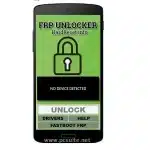Apple USB Driver
Detail of Apple USB Driver
At first, it’s best to ensure iTunes and Apple USB Driver Support are installed correctly on your computer. After this step is completed, unplug and replug your device in order to see if it works again. If your iOS device is not being recognized by your computer, this could be caused by an outdated or missing USB driver. With just a few simple steps you can resolve this problem.
When it comes to exchanging files between Apple mobile devices and computers, an Apple USB Driver is required. This driver allows your computer to recognize when an iOS device connects. Unfortunately, missing or nonfunctioning drivers can make this task more challenging; luckily there are ways around this problem that may provide solutions.
One way to resolve the issue is to download and install the latest version of Apple USB Driver from its official website, while another method would be using an independent program such as Driver Easy which automatically updates drivers on your computer. Furthermore, updating driver software regularly may help avoid issues on your system.
If you’re having issues connecting your iOS device to your computer, make sure the cable works and iTunes is properly installed on your system. Unplug and replug it as well to see if that helps resolve it; if none of these solutions do the trick, contact Apple immediately for support.
What is Apple USB Driver?
Apple USB Drivers allow your Windows computer to recognize and communicate with any iPhone, iPad, or iPod device connected via a USB cable. If your Apple device isn’t being recognized by iTunes or Windows 10, updating and/or installing these drivers might help. Here’s how:
Before getting started, first make sure iTunes and Apple Mobile Device Support are installed on your computer. Next, open Control Panel and Device Manager; expand Universal Serial Bus Controllers by clicking their icon. If your Apple device appears under Portable Devices or MTB USB Device (some users found it under Imaging Devices), it should work seamlessly with iTunes. If not, uninstall and re-install all relevant drivers to restore functionality. However, if you don’t have the time or patience to update drivers manually, Driver Easy offers an efficient solution: its free version helps detect and update outdated drivers instantly; but for even greater time savings upgrade to its Pro version which automatically scans and updates all your drivers with just two clicks!
Safe to Use Apple USB Driver:
Apple Mobile Device USB Driver is a Windows-based software component that enables your computer to identify and communicate with iOS devices such as iPhones, iPads, and iPods. iTunes automatically installs this driver when synching/backing up or transferring files between PCs and iOS devices; should this driver disappear or stop recognizing iPhones/other Apple devices there are various solutions to restore it back onto your system.
Uninstall and reinstall your driver manually by selecting Other devices in Device Manager and USB drivers; alternatively you could also try using a reliable driver updater program to update it automatically for you.
If you lack the patience or time to install drivers manually, Driver Easy can automatically update Apple USB Driver for you. It is free and works well across most Windows operating systems; additionally, you can even use it to update other drivers on your PC – plus it’s 100% guaranteed work!
Conclusion:
If your Apple device is missing from the Device Manager on Windows 10, there may be something amiss with its USB driver installation. As this driver acts as the main connection between software and hardware, if it’s misbehaving then your computer won’t recognize your iPhone or iPad and won’t show it up in Device Manager. There are some solutions to remedy the situation though!
Step one is to update your computer drivers. To do this, navigate to Universal Serial Bus controllers within Device Manager and right-click your Apple driver for “Update device driver software”, before clicking “Browse my computer for driver software application”.
FAQS of Apple USB Driver:
Whenever connecting your iPhone to a Windows computer, you may encounter various problems. iTunes might not recognize it properly or a USB device missing error might pop up; these could be indicators that the Apple USB Driver hasn’t been installed correctly – to fix this, follow these simple steps.
First, ensure that your PC meets the minimum system requirements by visiting Apple’s website and downloading and installing the appropriate USB Driver for your system. Install it according to Apple’s installation guide then reboot your PC and test its connection.
If you continue to encounter issues, try switching USB ports or disabling Windows’ fast startup feature – these could both help ensure that your PC runs more smoothly.




